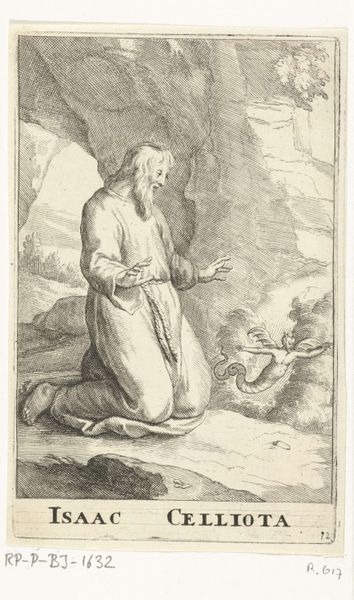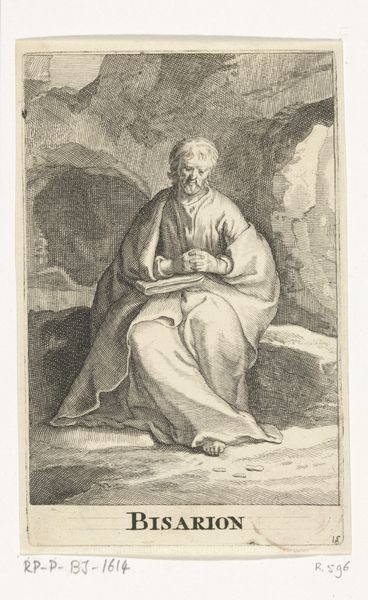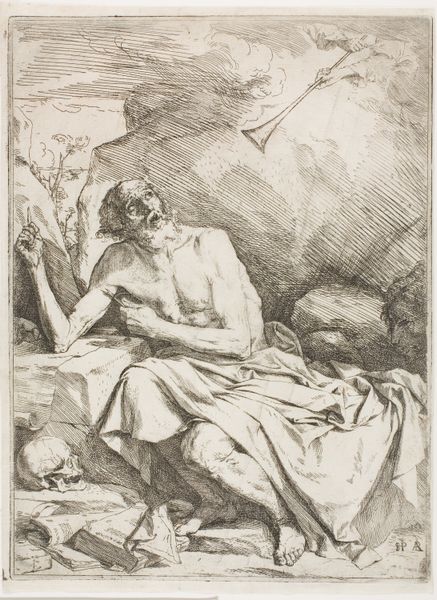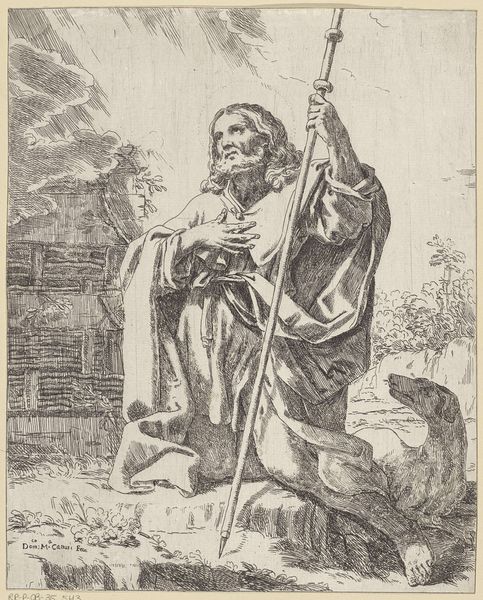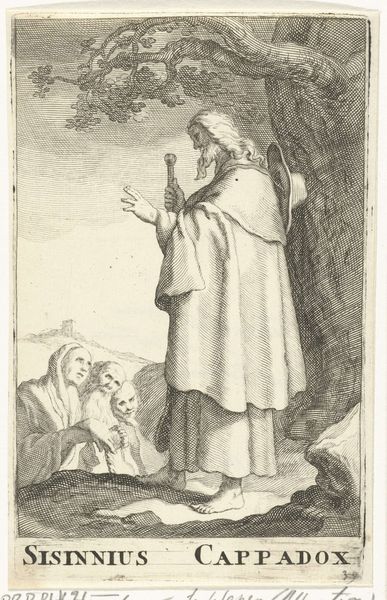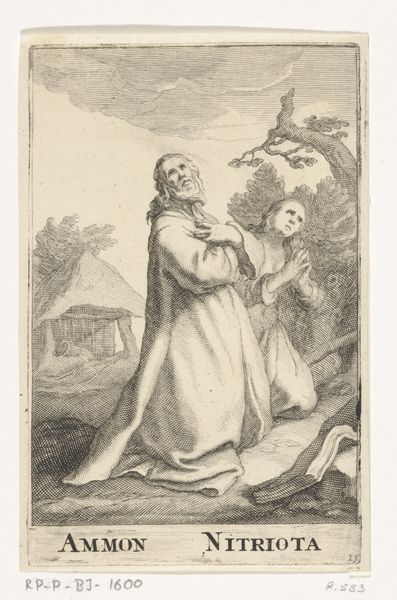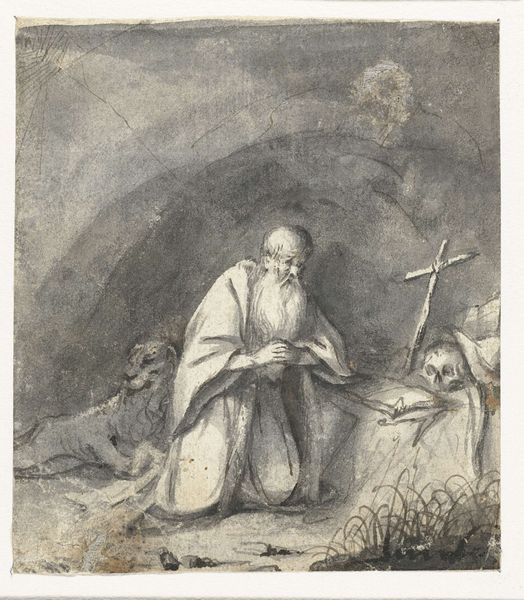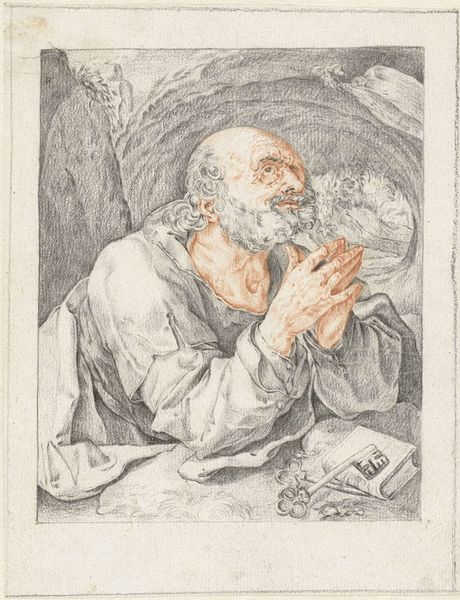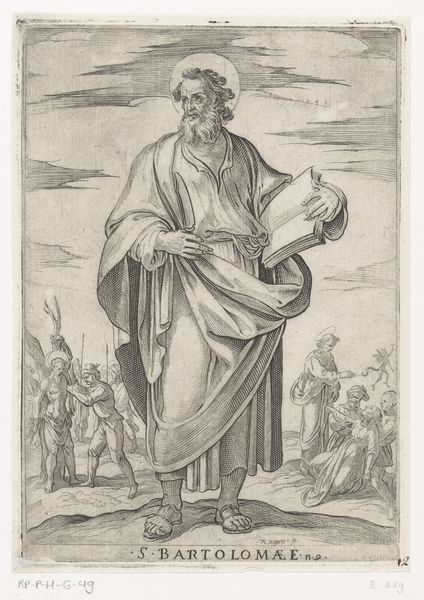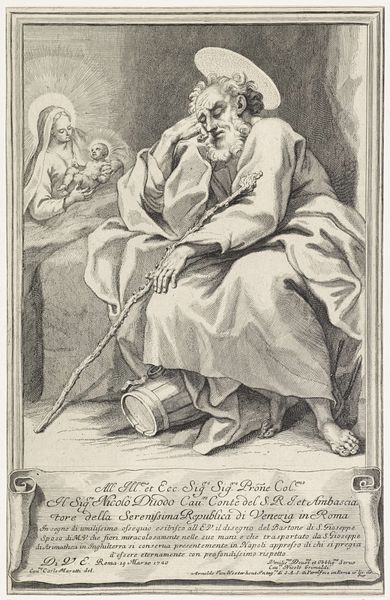
drawing, print, ink, pen, engraving
#
portrait
#
drawing
#
baroque
# print
#
pen sketch
#
pencil sketch
#
old engraving style
#
ink
#
pen-ink sketch
#
pen work
#
pen
#
history-painting
#
engraving
Dimensions: height 230 mm, width 172 mm
Copyright: Rijks Museum: Open Domain
Editor: This is Francesco Cozza's "Boetvaardige Petrus," which translates to "Repentant Peter," and it’s dated sometime between 1615 and 1682. It's an engraving, currently held at the Rijksmuseum. I’m immediately struck by the sense of isolation – he's dwarfed by these huge rocks, and it's all in ink, really highlighting the stark contrast. What stands out to you? Curator: The immediate iconography screams repentance and reflection. Notice how the rocky setting evokes a cave, a place of introspection, almost womb-like. The lines are harsh, yes, but also considered – each one seems to trace not just form, but emotion. Consider the gesture of Peter's hands, clasped in prayer. This posture, endlessly replicated through art history, speaks to a deeply embedded cultural understanding of contrition. What do those rocks, the sharp contrasts, tell us about the nature of guilt and forgiveness in the 17th century? Editor: It’s like the environment itself is a manifestation of his inner turmoil. Is there a specific artistic convention that Cozza is playing with here? Curator: Precisely! The Baroque loved this dramatic tension – the play of light and shadow becomes a visual metaphor. But also, the visual weight given to the earth…consider its role. This earth, upon which Peter denied Christ three times, now bears witness to his repentance. Does that shift in perspective - from betrayal to remorse - suggest something about humanity’s capacity for change, or perhaps the enduring power of faith to transform guilt into grace? Editor: That’s a great point! It is quite powerful to think of his remorse being witnessed by the earth. Curator: Indeed! And those repeated images—faith, betrayal, repentance—they gain new layers with each retelling, echoing throughout centuries. That's why examining these symbols isn’t just about deciphering the past, but understanding how those past stories still speak to us, influencing our perception of morality, forgiveness, and ourselves.
Comments
No comments
Be the first to comment and join the conversation on the ultimate creative platform.
